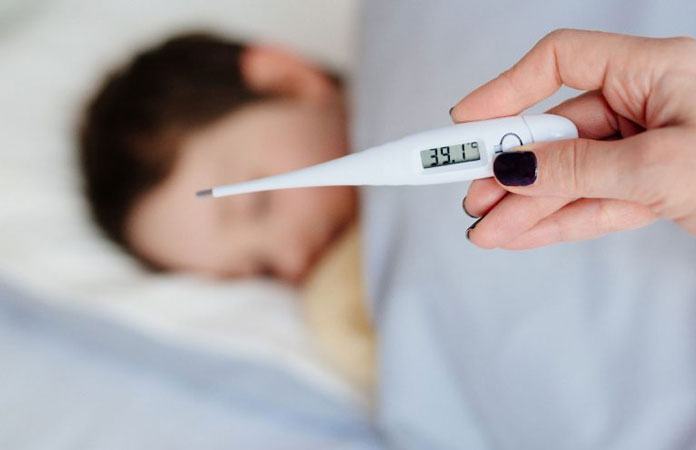
But why would the somewhat higher body temperatures of fever – an increase of about 1.8 to 5.4 degrees Fahrenheit ( 1 to 4 degrees Celsius) – which can’t even kill your own healthy cells, harm such a wide variety of pathogens? The main explanation for how fever helps control infections is that higher temperatures put heat-induced stress on pathogens, killing them or at least inhibiting their growth. If microbes or viruses have infected your cells and are using them to replicate, your own cells can also be considered pathogens and are treated that way by your immune system. Pathogens can be microbes such as certain species of bacteria, fungi or protozoans. We highlight several important but rarely considered points that help explain how the heat of fever helps your body fight infections.įever is a physiological response that has persisted for hundreds of millions of years across species. In our research and review, we propose that since fever occurs throughout much of the animal kingdom, this costly response must have benefits or it never would have evolved or been retained across species over time. It is also metabolically costly to generate that much heat. Besides making you feel uncomfortable, you may also worry you’ll dangerously overheat.

The evolution of fever is a classic conundrum because fever’s effects seem so harmful. We are a veterinary pathologist and an emergency physician interested in applying evolutionary principles to medical problems. However, if you were to ask your doctor exactly how fever protects you, don’t expect a completely satisfactory answer.ĭespite scientific consensus that fever is beneficial in fighting infections, exactly how is contentious. So, you feel chills when the fever starts and feel hot when the fever breaks. Fever typically results from immune cells at infected sites sending chemical signals to the brain to raise the set point of your body’s thermostat. Core concepts: thermoregulation in the newborn, part II: prevention of aberrant body temperature.When you’re sick with a fever, your doctor will likely tell you it’s a sign that your immune system is defending you against an infection. The global burden of neonatal hypothermia: systematic review of a major challenge for newborn survival. Thermal protection of the newborn in resource-limited environments. You can learn more about how we ensure our content is accurate and current by reading our editorial policy. We link primary sources - including studies, scientific references, and statistics - within each article and also list them in the resources section at the bottom of our articles. Medical News Today has strict sourcing guidelines and draws only from peer-reviewed studies, academic research institutions, and medical journals and associations. placing the baby in an open bed with a radiant warmer.warming devices, such as an over-the-bed warmer or heat lamp.If these strategies fail, a healthcare provider may recommend: covering the baby with a blanket, especially during skin-to-skin contact.holding the baby skin-to-skin against the warm body of a parent or caregiver.When a newborn has trouble regulating their body temperature, some strategies can help. It is important to see a healthcare provider if a baby has a low temperature that does not rise after using strategies such as dressing the baby more warmly or increasing the temperature of the house. Because of this, parents or caregivers should not overdress babies, put them in front of hot radiators, or otherwise expose them to intense heat in an attempt to warm them. Babies are vulnerable both to cold and to overheating. The correct treatment depends on why the baby’s temperature is low. The WHO advise taking daily temperature readings in an infant whose condition is improving. In a very small baby, taking the temperature two to four times daily can help with detecting unhealthy temperature swings.

The World Health Organization (WHO) recommend measuring a very unwell baby’s temperature as frequently as hourly. So ask a healthcare provider about the ideal temperature for the baby. Sometimes a falling temperature indicates a problem even if the baby’s temperature is within the normal range. A fever may mean the baby has an infection or is too hot.Įach baby is different. Temperatures above these ranges could be a sign of a fever. Temperatures below these ranges may signal hypothermia, which is a dangerously low body temperature. Healthy temperature readings are as follows: In babies younger than 2 years old, rectum temperature readings offer the most accurate information, provided the parent or caregiver takes the measurement correctly, using working equipment. The ideal baby temperature depends on the method a person uses to take the temperature. Share on Pinterest A rectum temperature reading usually provides the most accurate information.


 0 kommentar(er)
0 kommentar(er)
